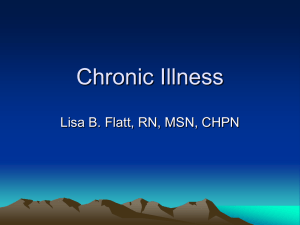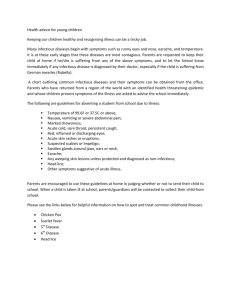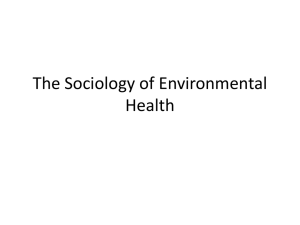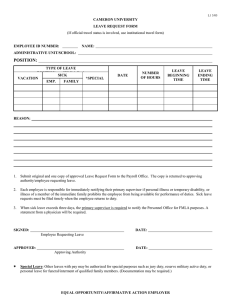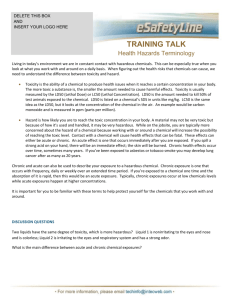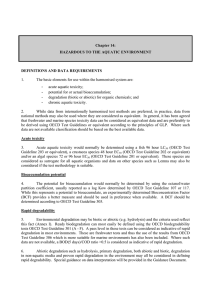Review of Environmental Health Science Paradigm: Sources of Chemicals Natural Extraterrestrial
advertisement
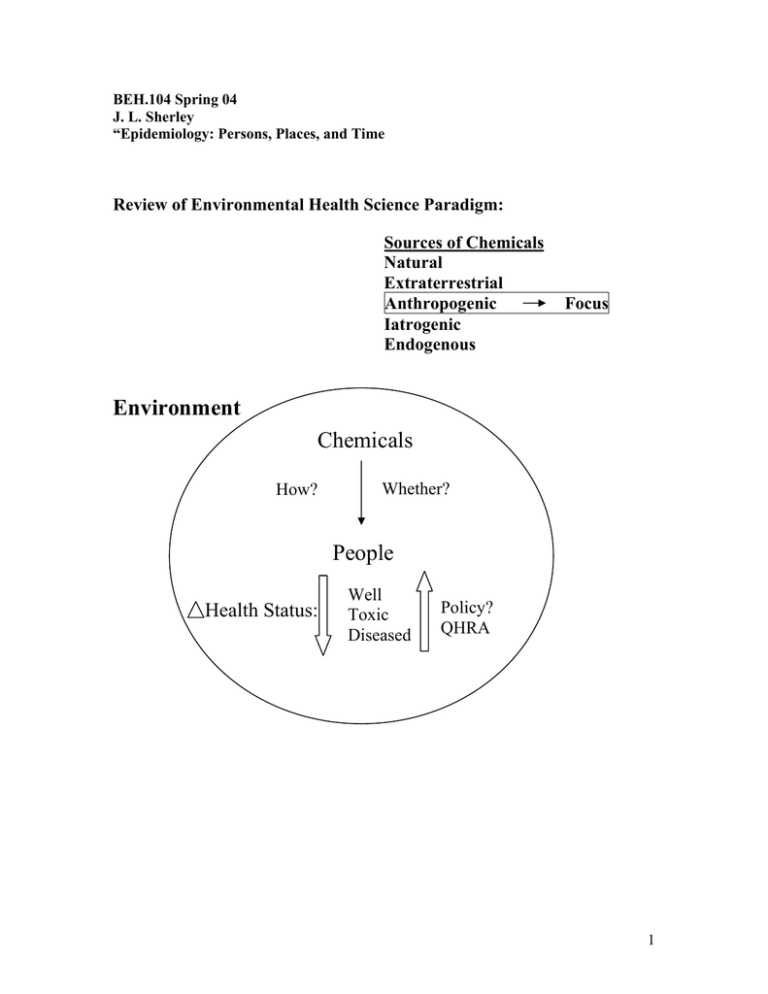
BEH.104 Spring 04 J. L. Sherley “Epidemiology: Persons, Places, and Time Review of Environmental Health Science Paradigm: Sources of Chemicals Natural Extraterrestrial Anthropogenic Iatrogenic Endogenous Focus Environment Chemicals How? Whether? People Health Status: Well Toxic Diseased Policy? QHRA 1 Essential Question: Is an agent in the environment responsible for a change in the health status of a human population? In some scenarios this question for a given chemical is clear cut. 1) Many examples of “toxicity discovery” in industrial workers Both acute toxicity and chronic illnesses Coal dust & miners- black lung, fibrosis Asbestos & ship builders- asbestosis, mesothelioma Aniline dyes & bladder cancer 2) Toxic Spills- factory and general population Usually acute toxicity In these scenarios we are very confident that Exposure (causes) ∆ Health Status What are the features of these scenarios that allow us to be confident? Even when the mechanism of action by the chemical is unknown. 1) The chemical agent - single often - identity is known - (sometimes toxic mechanism is known) 2) The exposure - known to have occurred - high dose, very often - often a single dose (though in industrial setting it may be chronic) 3) The exposed - often a small, well defined group - easily distinguished from non-exposed 4) ∆ Health Status - often toxicity - often an acute response - easy to detect 5) Exposure : ∆ Health timing - often serial 6) Intervention opportunity - remove the offending agent ⇒ reduce health effects 2 These types of scenarios underpin much of present day environmental health and safety policy and regulation. Unfortunately, they require significant death and injury to be developed and implemented. A greater challenge is to address environmental health scenarios that lack many of these features. Where there is uncertainty for each of these points. • Often the environmental health scientists (EHS) are confronted with a community or communities that perceive an increased burden of toxicity or disease - There may or may not be a specific suspected chemical agent(s) • Or an agent(s) is (are) suspected - agent known - health effect? – unclear The questions for the EHS: How likely is it that something is going on? What is the degree of uncertainty that a chemical agent is causing a ∆ in health in a given population? What level of uncertainty should evoke a public health policy response? 3 Consider the scenario of a perceived higher than expected rate of cancer in a city or town: 1) Chemical agent - often multiple suspected - suspected, but not known - no toxic mechanism 2) Exposure - not certain to have occurred - very often low dose - presumed chronic exposure 3) The exposed - large ill-defined group **long term public health consequences** - non-exposed not distinctive (consider environmental tobacco smoke) 4) ∆ Health Status - Big challenge #1: Has there been a significant change in health? Possible causes: - Environment - “Genes” (Includes familial relationship, ethnicity, race) - Chance variation - Psychosomatic - Hard to detect above “background” rates 5) Exposure : ∆ Health Timing - Unclear <acute, chronic, variable> 6) Intervention opportunity- If possible - Very expensive: clean-up, remediation relocation follow-up May not lead to an immediate reduction in health effects (e.g., cancer) 4 Main Goal of the next 8 lectures: Develop tools to evaluate the likelihood that chemicals in the environment cause a ∆ health status in a population. Start with Epidemiology 1) Study of epidemics - occurrence of disease in human population that has a unique pattern - a disease “outbreak” 2) Study of disease patterns in human populations and factors that influence disease patterns 3) Apply these ideas to human toxicity and toxin-induced diseases. 5 Evaluating Patterns of Illness Given an agent X That causes a ∆ Health There are 3 main categories of factors that will effect the pattern of illness: • • • Time- When did it happen? Places- Where did it happen? Persons- To whom did it happen? Who is sick? Time- What is the time frame of the development of illness? How does the illness evolve with time? Acute? Chronic? How do signs and symptoms emerge? How does appearance of illness relate to time of presumed exposure? Places- Where are the affected people located? What is the relationship between the presumed exposure place and illness? Does change in location alter the course of the illness? <Location or Behavior?> Persons- Define the affected population Who is getting sick? Who is not getting sick? Mechanism vs association What are their qualities? (Quality and its connections = variables ↔ “co-variables”) - gender - socioeconomic status - age - initial health status - ethnicity - habits - “race” (cultural practices) - familial relationships (heredity) - level of exposure - what distinguishes the sick from the well? - “high risk” vs “low risk” groups Patterns of transmission (time) - who gets sick first Examples 6
